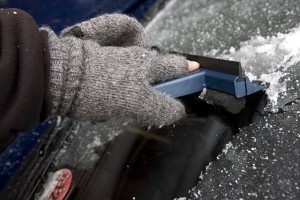Driving in the winter can take a toll on your car, and just like other things in life, preparation is the key to success. A handful of preparatory procedures can make a world of a difference and help you avoid the common problems that winter entails. Most of these preventive things do not require professional help, but can be done by you before you head out each day. But it is important to follow the guidelines set out in your owner’s manual with regards to maintenance and upkeep of your vehicle particularly tips on winter preparation. The last thing you want is any rock chips on your windscreen getting worse and having the inconvenience of getting a rock chip repair done.
Routine vehicle maintenance is the best way to avoid being stranded in the bitter cold. These comprehensive checkups include replacement of old belts and hoses, checking tire pressure, tune-ups and inspection among others. Winter tends to make oil thicker and pliable materials stiffer and brittle. Considering this, it is highly recommended that you use light-viscosity synthetic lubricants, which are slightly expensive than conventional oil but work across a wider temperature range.
The battery is the biggest concern in winter driving, and it is important to check your battery especially if it more than three years old. It is also a good idea to fill up your gas tank to help lower and the moisture within the engine and also prevent you from being stranded in the biting cold. Antifreeze is another important liquid to check up on each day especially in inclement weather, and should be maintained at a 60:40 coolant ratio. Not maintaining the proper antifreeze ration can cause the coolant to freeze and consequently crack the engine block.
With regards to liquids, it is important to check your windshield washer fluid regularly and ensure it is topped up. Same goes with the oils and filters and well and dirty oil as these issues can compromise your engine. Windshield wipers are your ultimate ticket to a clear view of the road, and must be in good working order regardless of the weather you’re driving in. Consider replacing your windscreen wipers if they’re more than a year old preferably with winter blades for icy conditions, which are especially designed blades are designed to prevent ice and snow build-up.
Checking your tire pressure is equally important as pressure tends to decrease with the temperature outside. You can find the right tire pressure in your owner’s manual or on the doorjamb, but take note that the tire pressure may differ for front and rear tires. While checking the tire pressure, it is a good habit to inspect them for crack and bulges and analyze the depth of the thread.
If you tend to drives in high snowfall areas, consider fitting snow tires to your vehicle. These specially designed tires provided enhanced traction in deeper snow, and if you witness frequent ice storms, consider installing studded snow tires. Apart from the tips above, you must have a first aid and basic tool kit handy in your vehicle. Winter driving can be a challenging experience so it is important to safeguard your vehicle to prevent things from going awry on the road.

